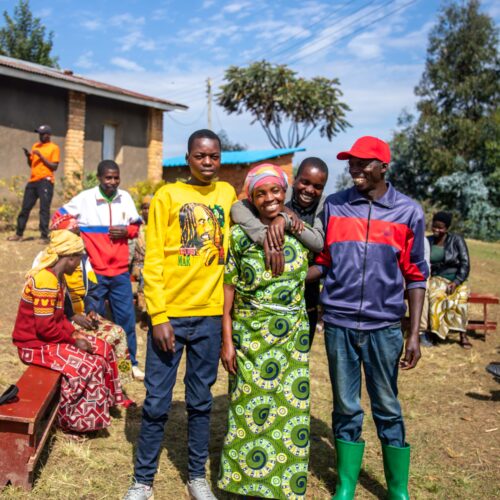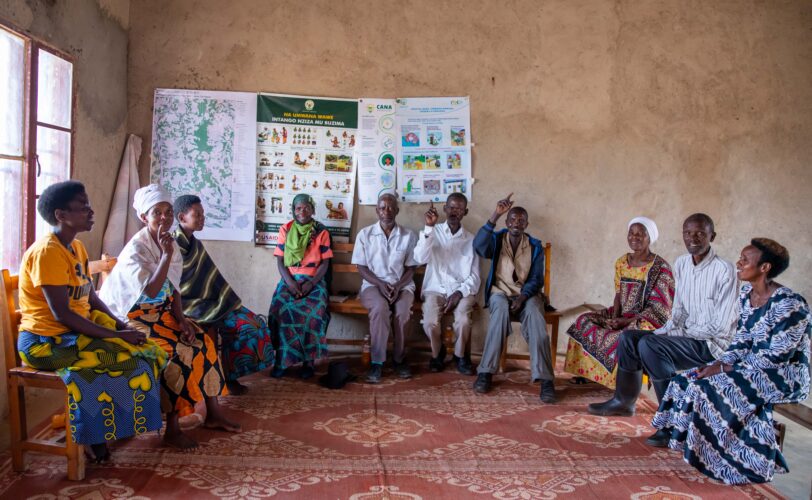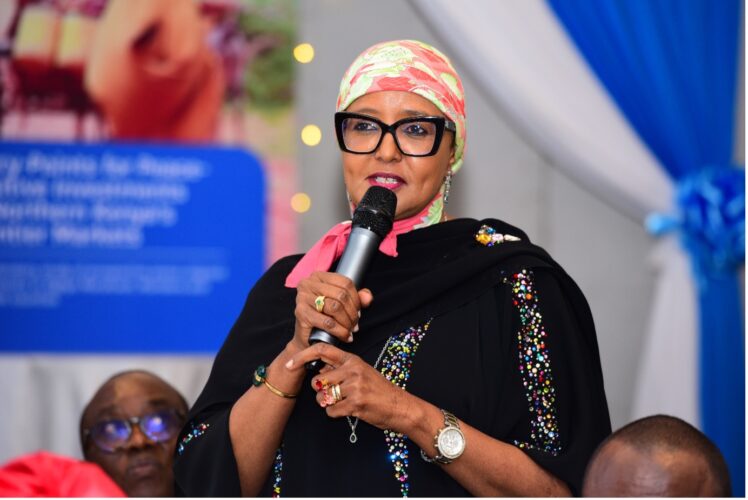How Resilience-Oriented Therapy is Transforming Mental Health and Psychosocial Support Services in Rwanda
More than three decades after the Genocide against the Tutsi in Rwanda, a significant portion of the population continues to grapple with its enduring effects on mental health.
Mukagaju (pseudonym), a survivor of the Genocide against the Tutsi, suffered from PTSD for 29 years. Although the genocide ended three decades ago, in her mind, it was still an ongoing nightmare. She continuously relived the harrowing scenes of screaming, running, hiding, and the killings she witnessed during the 100 days of horror. Due to the lack of appropriate support, she turned to prayer, hoping for healing, but to no avail.
"I was unable to sleep, suffered from terrible headaches, and was terrified of being alone. I would stay awake, hyper-alert throughout the night, hiding at the slightest sound or whenever I heard footsteps near my house, believing the perpetrators were coming for me and my children," she recounted.
Over the past three decades, the Government of Rwanda has made commendable strides in addressing the mental health burden by decentralising mental health and psychosocial support services to the health centre level and integrating them into primary healthcare.
However, national efforts face significant challenges, including insufficient funding, limited awareness and understanding of mental health, pervasive stigma, and a shortage of mental health professionals. The high prevalence of mental health conditions and the low utilisation of available services further exacerbate these issues.
The 2018 Rwanda Mental Health Survey (RMHS) by Rwanda Biomedical Centre (RBC) indicated a prevalence of mental disorders at 20.49%, substantially surpassing the global average. Today, that rate is likely higher than reported in 2018. In 2023, RBC reported that one in five Rwandans experiences mental health challenges, with 2,879 suicide attempts documented by the Health Management Information System (HMIS).
By June 2024, HMIS identified schizophrenia and other psychotic disorders (18%), depression (10%), bipolar disorder (2%), and Post-Traumatic Stress Disorder (PTSD) (2%) as the most common diagnoses. Globally, it is projected that by 2030, mental health disorders—particularly depression—will rank as the leading contributor to the global burden of disease. Furthermore, the intergenerational trauma stemming from the genocide continues to jeopardise the mental well-being of younger generations. Despite the high prevalence of mental health conditions, only 5.6% of the population seeks services from formal mental health care systems, according to RMHS.

According to Rwanda’s health workforce statistics, the country has only 16 psychiatrists (a ratio of 1 per 862,400 people), 441 certified clinical psychologists (1 per 31,289 people), and 202 mental health nurses (1 per 68,400 people) working in public facilities. These professionals primarily employ a one-on-one approach and often prioritise pharmacological treatments over psychotherapy.
Mukagaju eventually overcame her trauma after joining a Resilience-Oriented Therapy healing group established at Rukira Health Centre in Ngoma District, Eastern Province of Rwanda, six months ago. “Today, I sleep peacefully after years of fear and hypervigilance. Nothing frightens me to the point of fleeing my home at night, because now I know we are not in the middle of the genocide. I’ve learned to control my fears whenever they arise,” she joyfully explained.
Resilience-Oriented Therapy is a psychological intervention designed to address mental health issues related to emotional regulation, identity development, behavioural self-management, and the enhancement of individual psychological resilience within a group setting. Introduced in health centres in October 2023 through a joint effort by Interpeace and the Government of Rwanda, spearheaded by RBC, the therapy aims to provide a sustainable, cost-effective solution to the challenges posed by the high prevalence of mental health disorders.
Resilience-Oriented Therapy not only addresses mental health issues rooted in traumatic events such as the genocide but also supports individuals facing conditions triggered by various life circumstances. For instance, Uwimana (Pseudonym), who attempted suicide twice due to depression after suffering mistreatment from her husband—who abandoned her while she was four months pregnant—shared her transformative experience.
"I tried to throw myself and my children into the river because I thought ending our lives was the only way out of my pain. I didn’t want to have another child after being abandoned. This group has helped me; I no longer feel stressed or depressed. I’ve found inner peace, and now I am determined to raise my children with hope for a brighter future," Uwimana said, holding her five-month-old baby, who she noted would not have been born had she not joined the Resilience-Oriented Therapy group at Nyakigezi Health Centre, Rugera Sector, Nyabihu District, Western Province.
Resilience-Oriented Therapy represents the first group-based intervention introduced within formal health facilities in Rwanda. It is currently available in 32 health centers and seven district hospitals across five districts—Musanze, Ngoma, Nyabihu, Nyagatare, and Nyamagabe—and is administered by trained psychologists or mental health nurses. To date, 446 individuals (308 women and 138 men) have benefited from the therapy.
The therapy is tailored to Rwanda’s specific cultural context, while incorporating international best practices, ensuring its relevance and effectiveness.

The healing process spans six months, with the group convening for weekly three-hour sessions. Through this intervention, participants acquire psychosocial skills for trauma management, emotional regulation, self-care, and resilience building, equipping them to navigate daily challenges and adapt to evolving circumstances.
Dr. Jean Damascene Iyamuremye, Director of Psychiatric Care at RBC, recognises the positive impact Resilience-oriented therapy has had on the community and advocates for its nationwide expansion. "This is an innovative approach compared to the one-on-one approach we have been using. We have observed considerable progress since its implementation. In the community, people are now more motivated to seek professional help at the early stages of their mental health challenges. They have found healing and solace, and our hope is to scale this therapy across the country. It’s a community-based intervention we deeply appreciate, as it has also enhanced the overall quality of care,” Dr. Iyamuremye remarked. Interpeace is working with RBC to scale up the intervention across the country.











